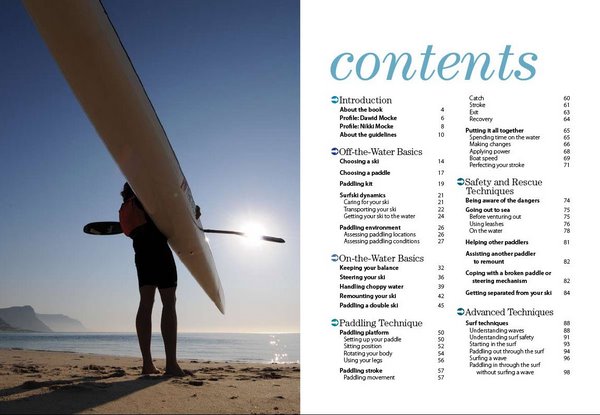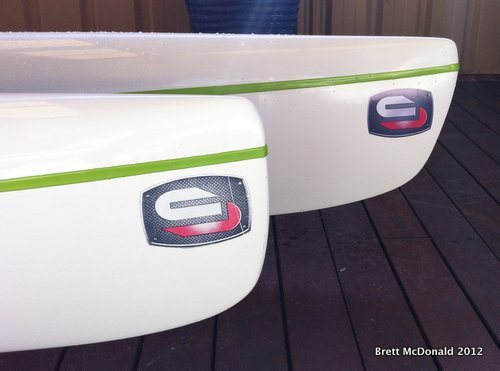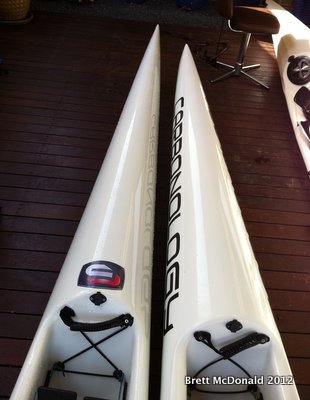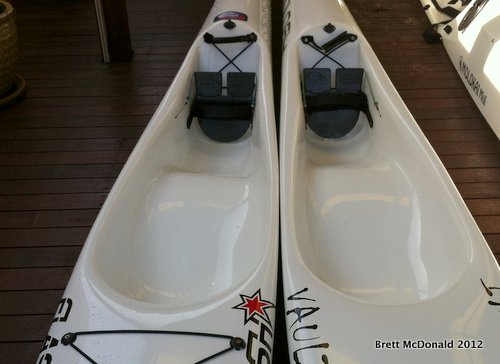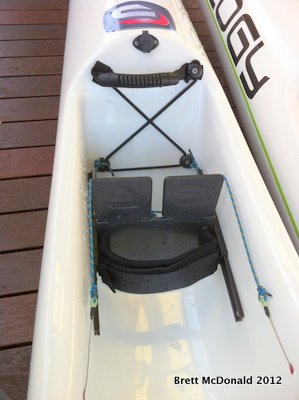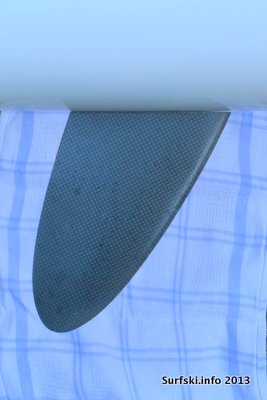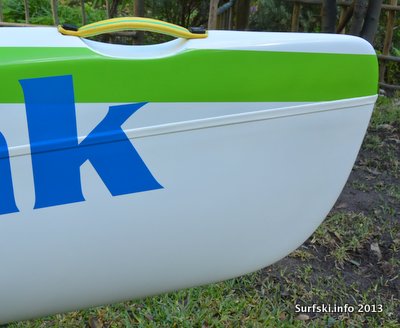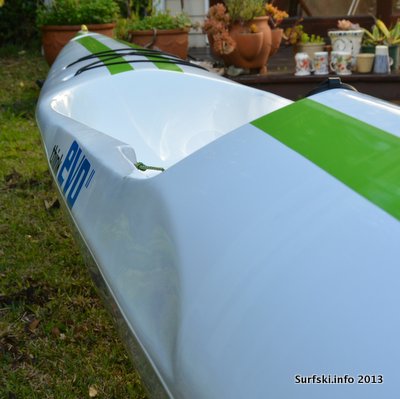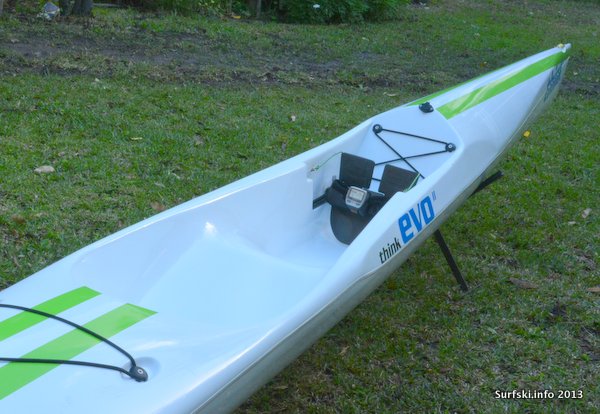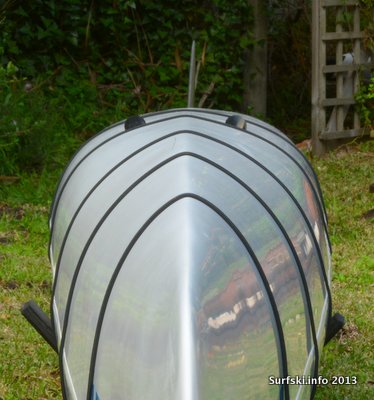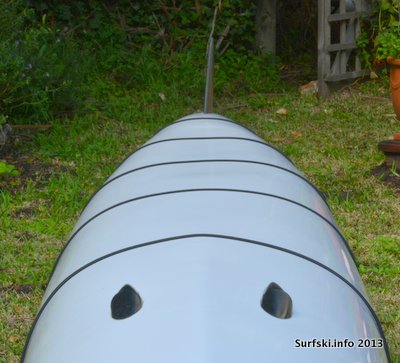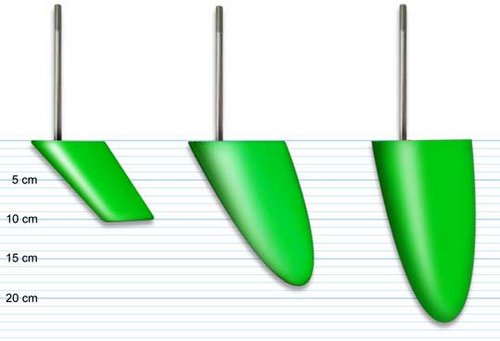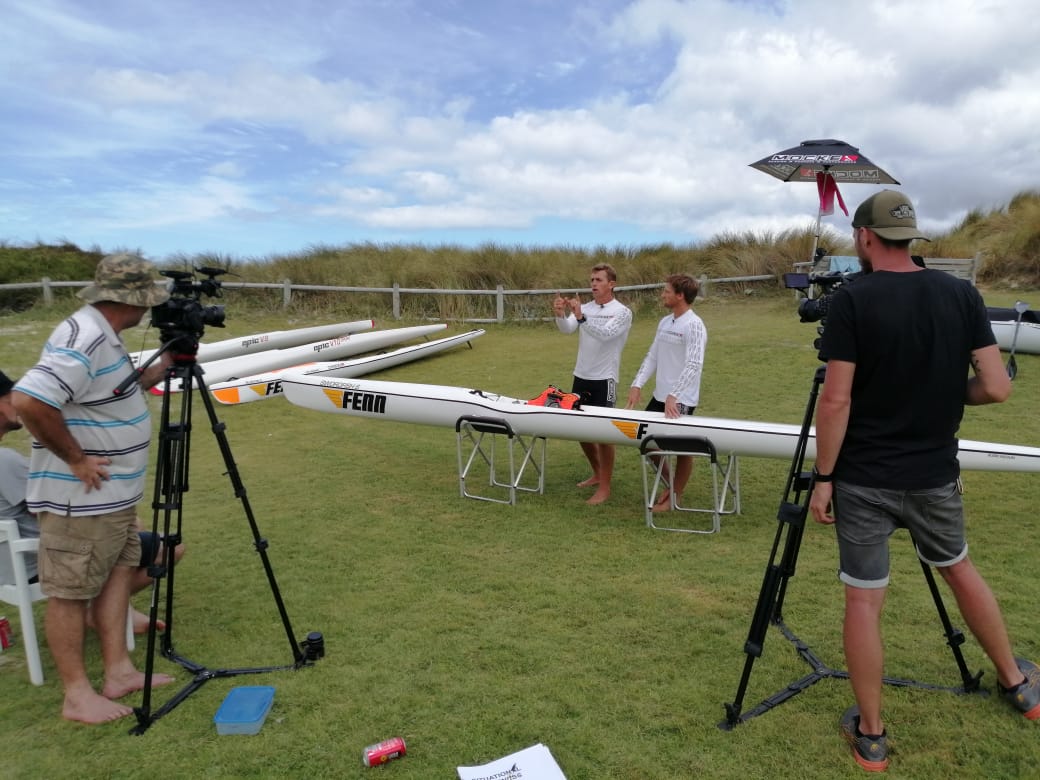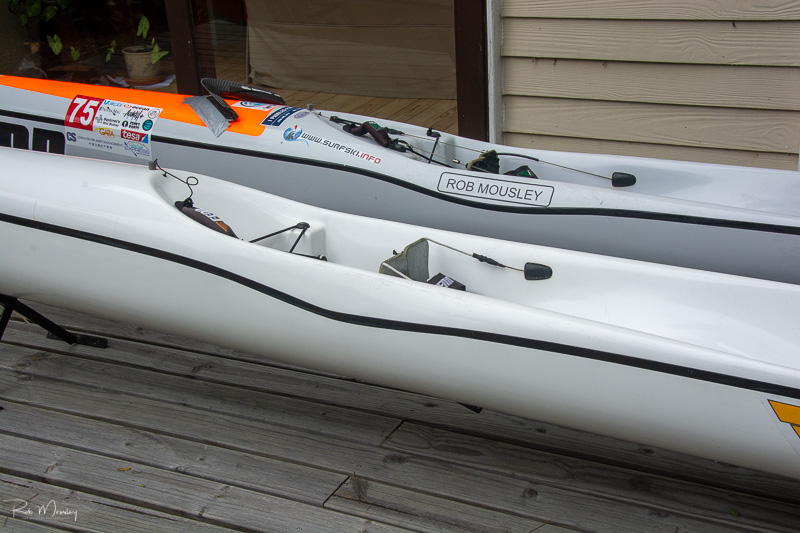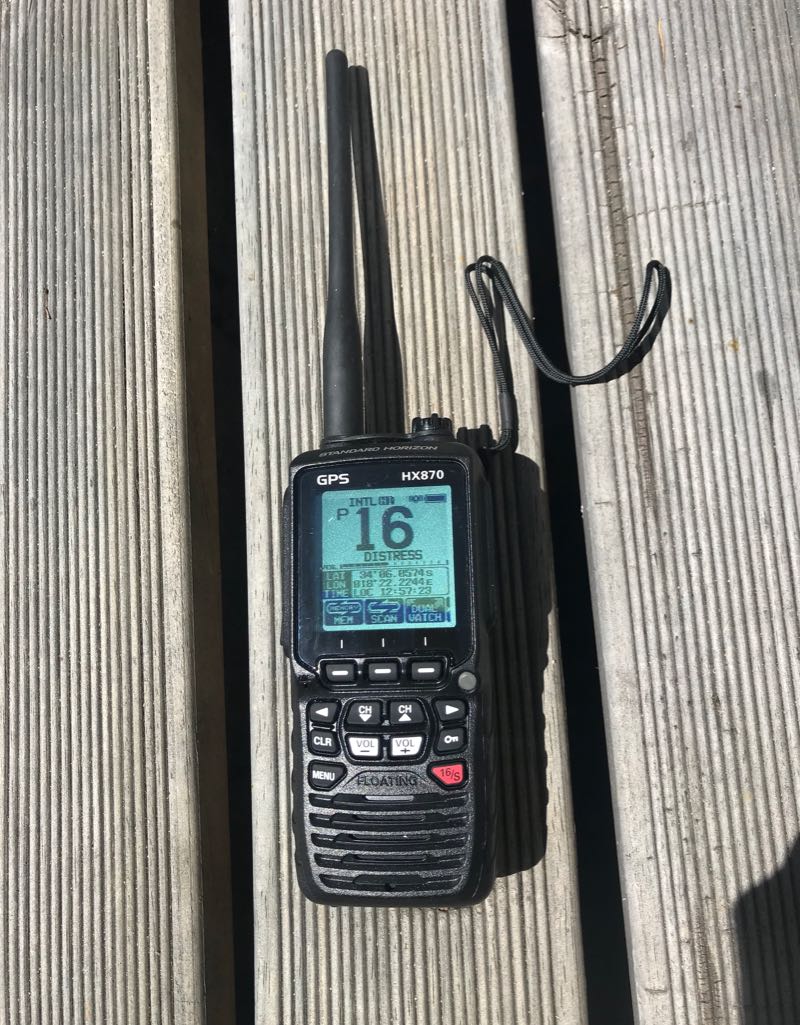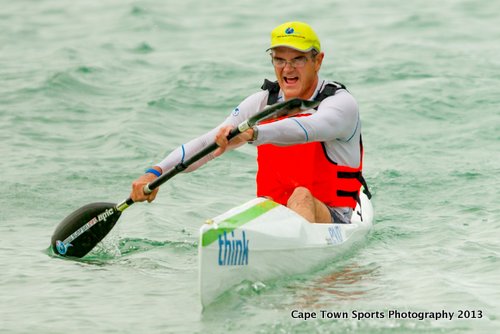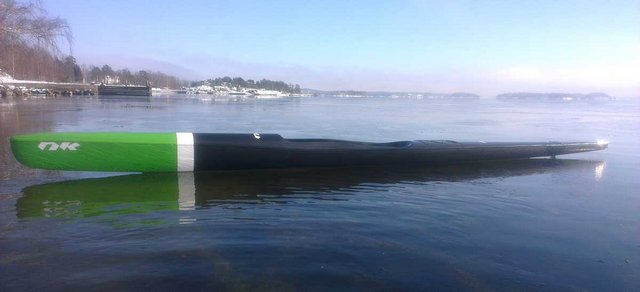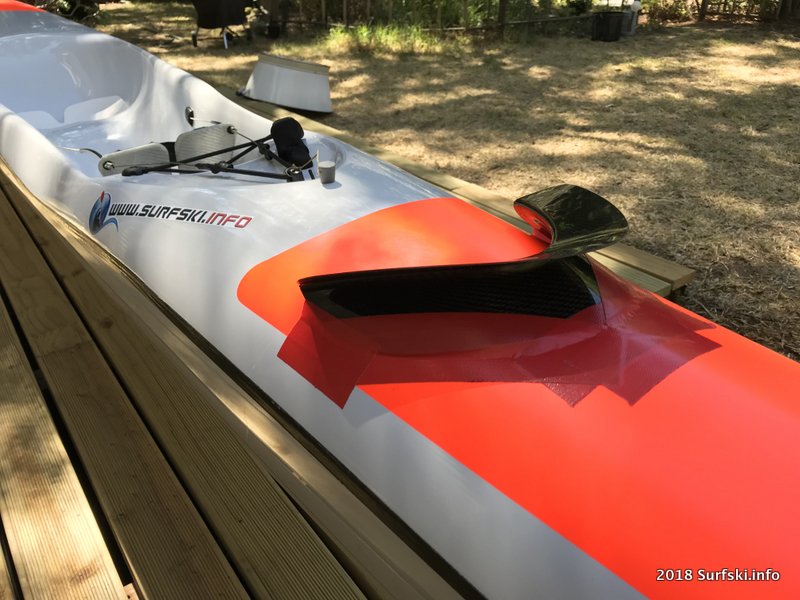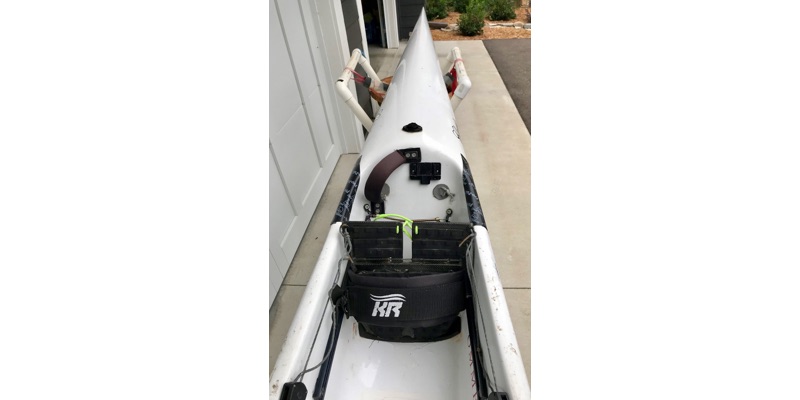
As I shot down the face of the run, spray flying, I spotted the next dip in the water over to one side. A touch of the rudder pedal, a slight lean and the surfski turned towards it; through the dip and a neat curve in the other direction and I'd shot around the shoulder of the wave, accelerating again onto the next run. A crazy thought ricocheted around my brain: What was it that produced this feeling of extreme pleasure? Adrenalin? Endorphins? Dopamine? All three? Whatever it was, the feeling of playing with a new boat definitely added to it.
Time for a New Surfski
For the last 3 years I've mostly paddled a South African license-built Think Evo II, but... my beloved Evo has grown old, having been used and abused a great deal (I paddled over 100 downwinds in 2017 alone, and a total of over 2,200km. In total it must have done around 7,000km). It has various dings, including, currently, a 30cm split in the seam where I was blown against a buoy during a race, and some soft spots on the hull. It's been repaired a couple of times and has become quite a bit heavier than it used to be, thanks to persistent small leaks.
I'll get it repaired, but it was clearly time to get a new ski.
Choices
The choices of intermediate surfski available here in South Africa are the Fenn Swordfish S, Epic V10 Sport, a (single) Stellar SEI and the Nelo 550. Of these:
- Epic V10 Sport - I've paddled the V10 Sport a number of times and although I think it's a fine ski, for some reason I've never made friends with it, battling to match my normal times on a Miller's Run.
- Stellar SEI - I had one glorious reverse Miller's Run in a demo ski, dicing with Nikki Mocke, who usually paddles away from me easily, but the next paddle - long distance and flat - revealed the total incompatibility between me and the seat and I ended the paddle in agony and said farewell to the ski.
- Nelo 550 - I did one very wet Miller's Run in a borrowed ski without the wave deflector and enjoyed it, but aside from anything else the cost of the imported ski in South Africa is way out of my reach
The one ski I hadn't tried (recently) was the Fenn Swordfish S, and the opportunity came up to paddle a demo ski (thanks Pete Cole/Orka) and I grabbed it for a ten-day trial, during which I did 7 Miller's runs in varying conditions as well as some flat water paddling.
Miller's Runs
As most people know, I'm a bit of a fanatic when it comes to the Miller's Run downwind route here in Cape Town and it was easy for me to measure my performance in the Swordfish S against my paddling buddies.
Miller's #1
I immediately noticed how little the Swordfish S is affected by side-on wind. To get to the start of the Miller's Run, you have to paddle 800m diagonally into the wind and waves to Bakoven Rock, which marks the start of the run. In my Evo II, in big conditions, this can be challenging: the Evo's big nose catches the wind and as you thrust over the crest of an oncoming wave, the wind often blows the ski violently sideways. On a recent paddle the GPS track showed this graphically in the form of a drunken zigzag, as I battled each time to turn the ski back into the wind, only to be smashed 45 degrees off course time and again.
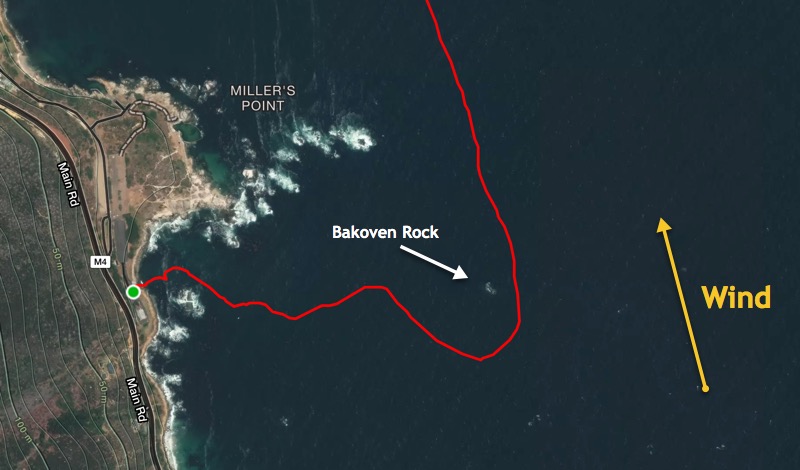
Normally, we paddle straight out to Bakoven Rock. On this day the SE was blowing 32kt, gusting to 40kt.
This simply doesn't happen on the Swordfish S. Consequently, I'm far more relaxed going out to the rock - and a lot faster.
Elliptical Rudder
The second Miller's Run saw us going out in much more messy conditions, with waves running in multiple directions. This time I battled somewhat, especially in the smaller waves near the start. I noticed that the ski often seemed to be blown off-line so that at the moment I needed to take powerful strokes to get onto the run, I'd be skewed off and miss the run. Very frustrating. After a few km, the waves cleaned up and grew bigger, and then I was fine. But my overall time was off, relative to my buddies.
So, I installed a big elliptical rudder; not to enhance the ski's ability to turn, but rather to hold the ski straight. And it works like a charm. Miller's Run #3 (and 4, 5, 6 and 7) saw me achieving very satisfactory times.
Reluctantly handing the ski back, I made the decision to get hold of my own and ordered a Hybrid Swordfish S. The Hybrid model is only a kg heavier than the all-carbon version and is more hard-wearing, something appropriate for the kind of paddling that I do.
Swordfish S Carbon Hybrid
Ten days later I collected the ski. Back home, I impatiently ripped off the packing...
First looks
- The quality of the finish on these skis has improved radically since the last time I owned a Fenn (which admittedly was quite long ago). I'd say the standard of manufacture of the hull matches that of any of its competitors. The hull fittings aren't flashy, but are robust and fit-for-task. Example: the tiller bar is a simple steel bar - Functional, but not a work of art.
- The rudder lines are the same old steel cable and they're adjusted with the same old Allen Key arrangement. The Fenn philosophy is that 99% of the time, you set your footplate once and you never move it again. "If it ain't broke, don't fix it!"
- The footplate assembly is a lot sturdier than my old Swordfish (the last Fenn I owned about 7 or 8 years ago) and it feels very rigid.
- The ski weighed just over 11.5kg - I was delighted, not expecting it to be that light.
Pimping the ski
I immediately:
- Fitted a bigger Orka-made elliptical rudder. (It does make the ski slightly twitchy and some paddlers may prefer the original Fenn rudder which is less effective than the elliptical version.)
- Glued a weed deflector onto the hull in front of the rudder.
- Removed and discarded the rudder bar cover; I've done this with all the boats I've owned because I always want to see what's happening to the cables in case of corrosion. It does expose the less than elegant rudder bar fittings, but I've always done this - and it's saved me from the embarrassment of broken rudder lines on at least one occasion.
- Fitted rubber non-slip mats to the footplate and pedals.
- Adjusted the footplate so that there were 7 holes visible in the adjuster track in front of the footplate - I've consistently used that setting in all my Fenn skis: Mako 6, Mako Elite and first generation Swordfish.
I appreciate the directional stability the elliptical rudder brings - and the slow speed agility
First Paddle - Ouch!
And then it was off for a paddle - and me being me, it was a moderate Miller's Run in 18-25kt with small, linkable runs.
And wow, was it uncomfortable! The footplate was too close and I was suffering from a raw coccyx having paddled another ski ten days earlier that had ground the skin off…
But still - the agony wore off to a bearable numbness by the time we reached the start, 800m out to sea, and the downwind went pretty well. My time of 48:21 was fairly normal, given the conditions and my discomfort.
The ski felt slight different to the demo model that I'd been paddling and I suspect that the design evolved somewhat after that particular demo ski was built. For example, the nose seemed to dip slightly more (although this might have been the particular conditions on the day).
I took the ski home and:
- Adjusted the footplate out one notch
- Added a Nelo-built wave deflector (courtesy of Oscar Chalupsky) to the foredeck.
I also took the ski down to Orka, where we installed a set of high viz neon orange stickers, highly recommended for safety reasons for those of us who paddle offshore! The stickers are available from Orka Paddles - contact them directly.
Nelo Wave-deflector - the most effective I've ever used.
And two days later, I went for another Miller's Run. This time I was a little more comfortable - leg length perfect, but still suffering from the raw coccyx - and felt more at home in the ski. Conditions were mellow (wind about 15kt) and I was recovering from a cough so I didn't push my heart rate. Time: 49min on the nose.
Wild Miller's
The next day was wild - "proper" Miller's Run conditions with 27-35kt of SE pushing some big sets across the bay.
As I set off, I felt a different kind of pain that had been masked by the raw burns the previous few days. Now I felt the back of the bottom of the bucket pushing against my coccyx - and could feel it rubbing, but fortunately on a different area to the already raw area! I'd used Vaseline as a precaution and I didn't suffer "roasties", but I did end up with a bruise or two… Things are never simple!
But the paddle was fabulous.
There were sets of swells running in several different directions, so it was possible to hurtle down a run, and then pop over a saddle between two waves in front, swing right and then swing left onto the next one… Great stuff.
But, as is often the case with big swells, there were times when there wasn't anywhere to go, and times when I just didn't have enough acceleration to get onto the run - and that dragged my average speed down to the point where I wasn't going to get a Personal Best.
I ended up with a time of 46:23, about 2min outside my PB (44:26, clocked late last year in the Think Evo II). Not bad in the circumstances, and I ended the run with a satisfactory dose of adrenalin and endorphins!
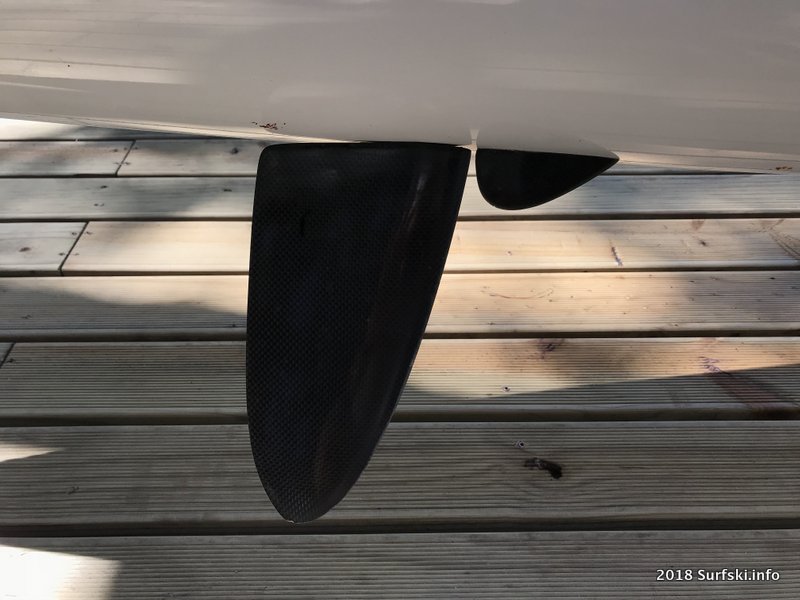


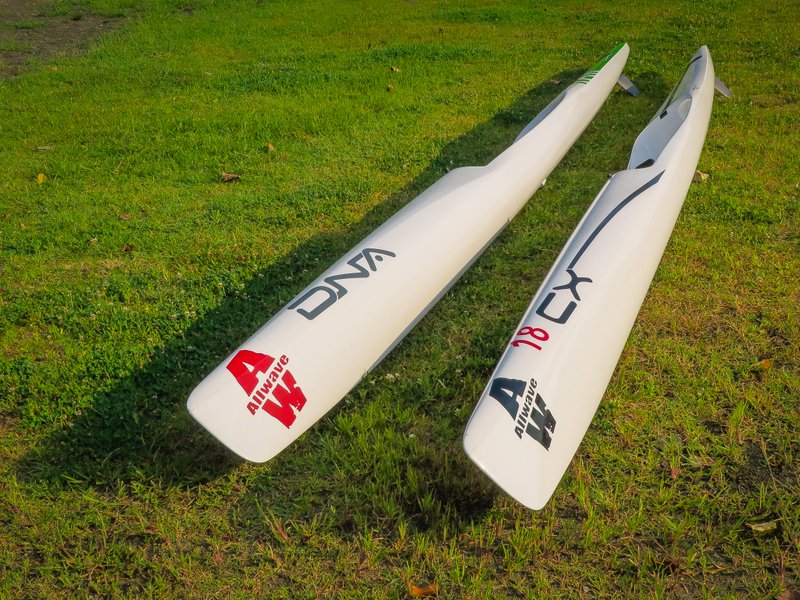

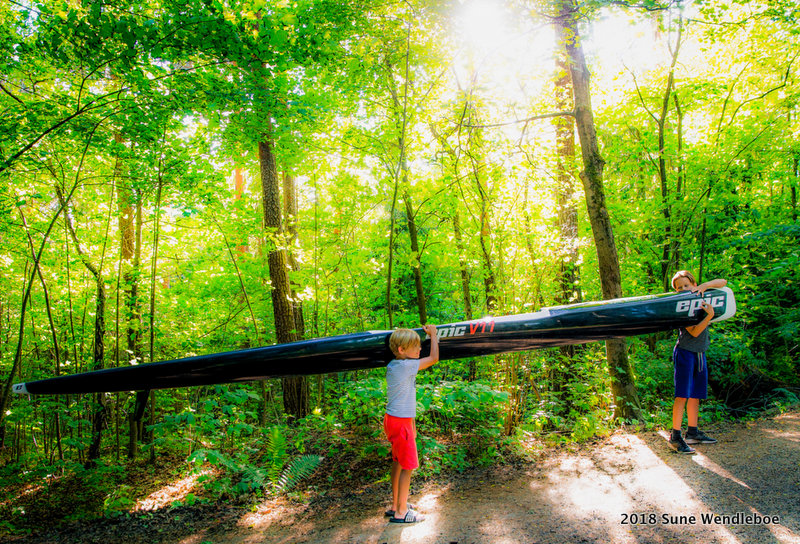
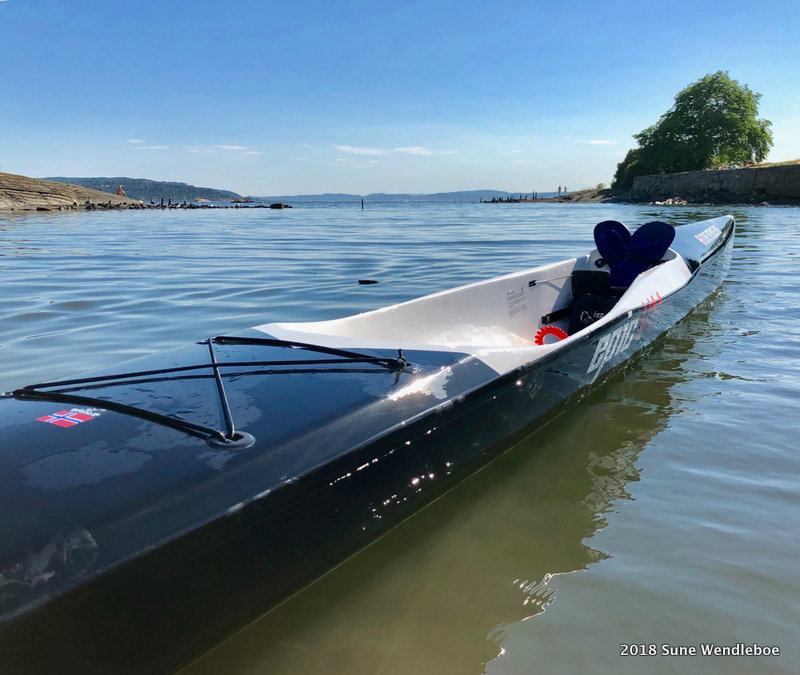
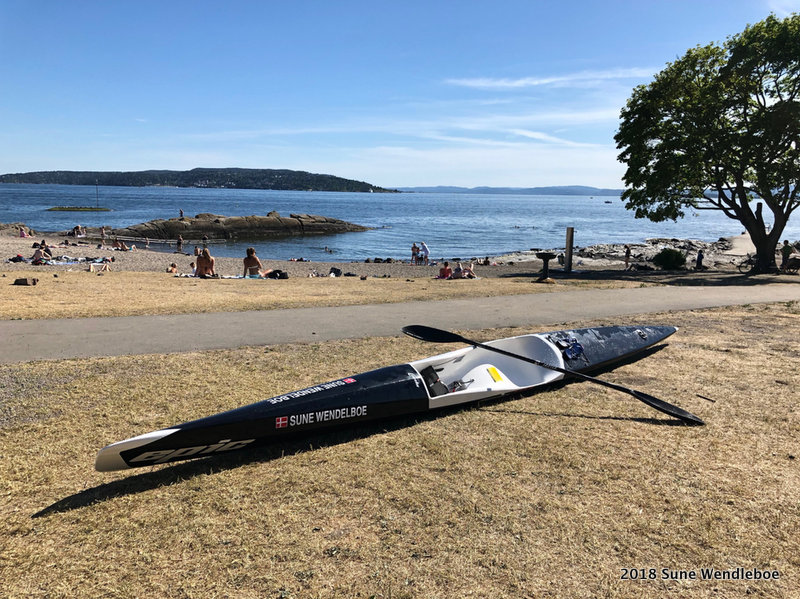
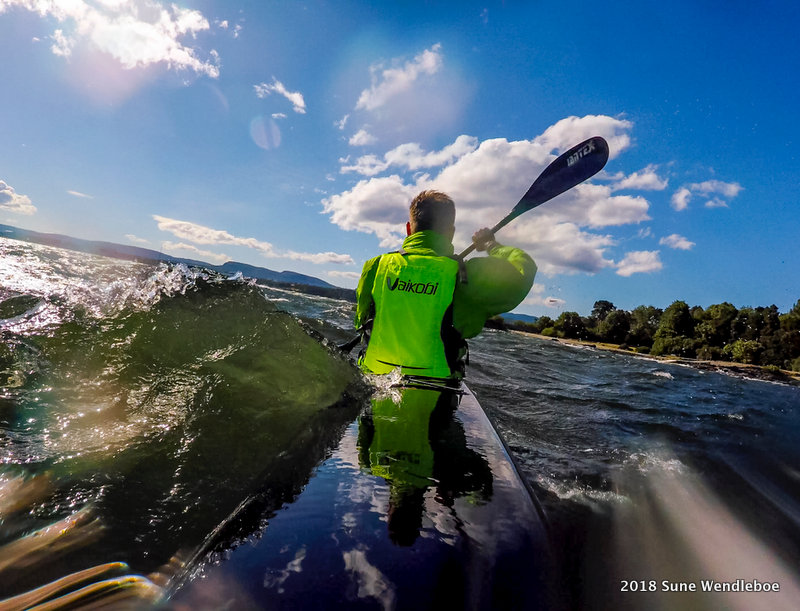

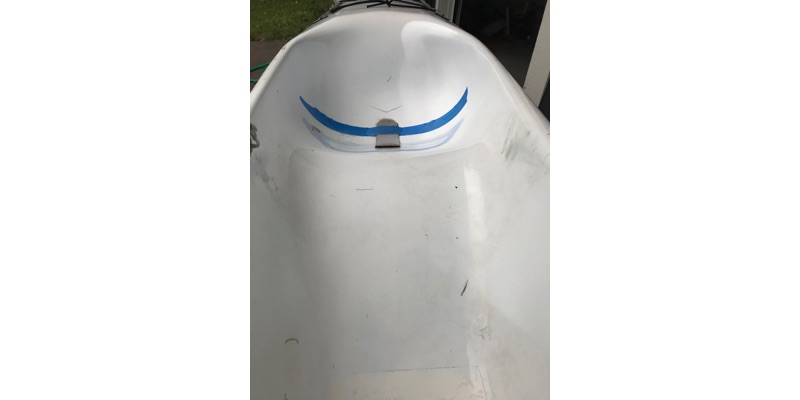

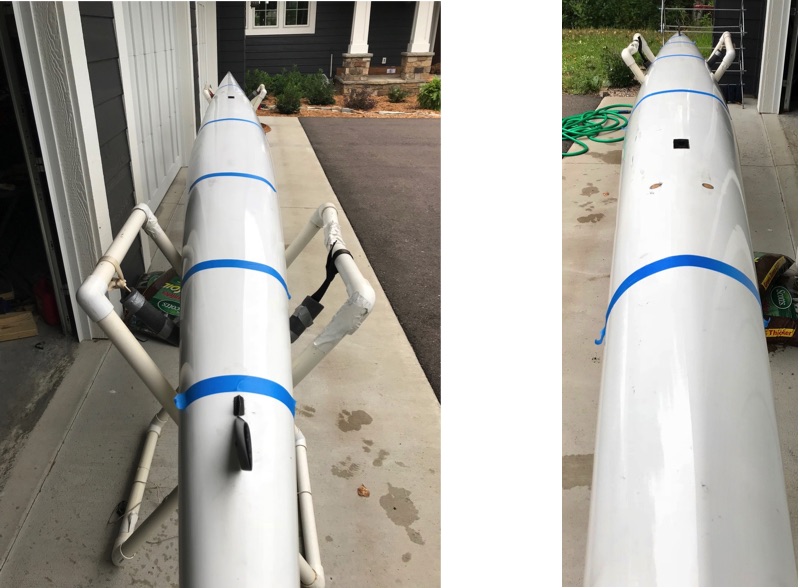




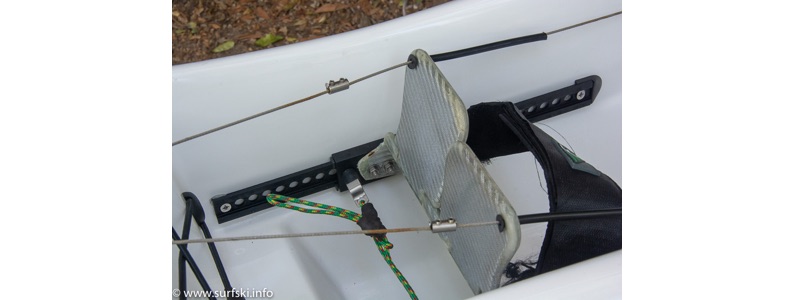
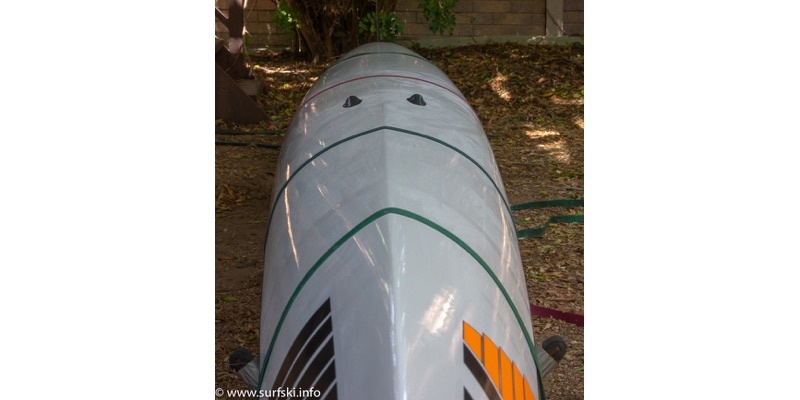




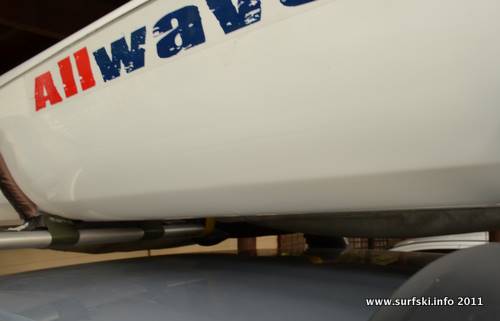
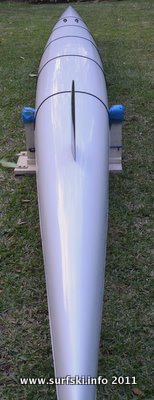


.jpg)
.jpg)
